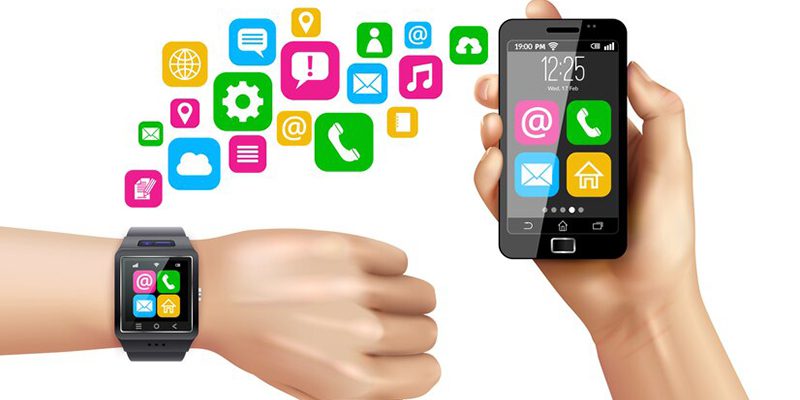Introduction
In an era where technology is continuously advancing, Android wearable technology has emerged as a game-changer in the health and fitness industry. Say goodbye to the monotonous and outdated fitness routines that have failed to yield the desired results. Android wearable technology is here to transform your approach to health and fitness, offering convenience, motivation, and real-time performance tracking right at your fingertips. This article will explore how Android wearables are revolutionizing the health and fitness sector, covering their definition, history, growth in popularity, types, benefits, and their role in improving overall well-being.
Definition of Android Wearable Technology
Android wearable technology refers to a class of electronic devices that run on the Android operating system and are designed to be worn on the body. These devices, which commonly take the form of smartwatches, fitness trackers, and other wearables, provide users with convenient access to information and services without the need for constant reliance on their smartphones.
Over the years, wearable technology has evolved significantly, with an increasing focus on health and fitness applications. These devices incorporate a range of sensors, such as accelerometers, heart rate monitors, and GPS trackers, enabling individuals to monitor their daily activities, health status, and overall well-being.
In this comprehensive guide, we will delve into the world of Android wearable technology and understand how it has transformed the way we approach health and fitness.
The Evolution of Android Wearable Technology
Android Wear, a wearable platform developed by Google for smartwatches and other wearables, was first announced in 2014 with the release of Android Wear 1.0. This operating system was specifically designed to bring the power and convenience of Google’s Android operating system to smaller wearable devices. It opened up new opportunities for developers to create apps tailored for wearables and allowed users to access notifications, messages, calls, and other features directly from their wrist.
Since its initial release, Android Wear has seen several updates and enhancements. In 2016, Google introduced Android Wear 2.0, which introduced features like standalone apps that didn’t require a smartphone connection and improved fitness tracking capabilities. The latest version, Android Wear OS, launched in 2018, further refined the interface and put a greater emphasis on health and fitness.
One of the key reasons for the success of Android Wear is its compatibility with a wide range of hardware. Unlike Apple’s watchOS, which is exclusive to Apple Watch devices, Android Wear supports various manufacturers, including Samsung, LG, Fossil Group (featuring brands like Michael Kors and Skagen), Huawei, Asus, and more. This broad compatibility ensures that users have a diverse selection of Android wearables to choose from, catering to various preferences and needs.
Growth and Popularity in the Health and Fitness Industry
The health and fitness industry has experienced remarkable growth in recent years as more individuals become conscious of their overall well-being. This burgeoning awareness has driven the demand for products and services that promote a healthier lifestyle. Android wearable technology has played a pivotal role in supporting this growth by offering advanced features, convenience, and widespread popularity among users.
One of the primary reasons for the surging popularity of Android wearables in the health and fitness industry is their capability to accurately track physical activity. Equipped with sensors that monitor steps taken, distance traveled, calories burned, heart rate, and even sleep quality, these devices provide users with a comprehensive overview of their daily physical activity levels. This data empowers individuals to set achievable goals for improvement and offers insight into their overall well-being.
Additionally, Android wearables offer real-time tracking during workouts and physical activities such as running or cycling. This real-time monitoring allows users to assess their performance instantly, make necessary adjustments, and gain immediate feedback on their progress. It serves as a motivating factor, propelling individuals towards their fitness objectives.
Moreover, the compatibility of Android wearables with a wide array of health apps contributes significantly to their growth in the health and fitness industry. These devices seamlessly sync with popular fitness apps, allowing users to access and manage their health data efficiently. This integration has made it easier for individuals to track their fitness goals, dietary habits, and overall well-being.
Types of Android Wearable Technology
The ever-evolving world of technology has witnessed the emergence of various types of Android wearable technology, each equipped with unique features and functions. These wearables cater to diverse needs, lifestyles, and preferences, making it easier for individuals to find the perfect device for their health and fitness journey.
1. Smartwatches: Smartwatches have become incredibly popular and are considered an indispensable tool for health-conscious individuals. These devices do more than just tell time; they offer features such as heart rate monitoring, step tracking, sleep tracking, GPS capabilities, and notifications for calls and messages. Smartwatches come in a range of stylish designs to suit different tastes, making them a versatile choice for both fashion and function.
2. Fitness Trackers: Fitness trackers, as the name suggests, are designed explicitly for tracking physical activity. These compact devices can be worn on the wrist or clipped onto clothing. They employ sensors to record data such as steps taken, distance traveled, calories burned, and sleep patterns. Fitness trackers provide real-time feedback on activity levels, motivating users to reach their fitness goals.
3. Smart Clothing: Smart clothing is a relatively new category in the world of Android wearables but is quickly gaining traction due to its practicality and versatility. This type of wearable integrates technology into clothing items like shirts, sports bras, and leggings, offering features such as heart rate monitoring, motion tracking, and more.
Smartwatches: A Game-Changer in Health and Fitness
Smartwatches have taken the health and fitness industry by storm, offering an array of features and capabilities that have made them an essential tool for anyone looking to improve their overall well-being.
With the rise of Android wearable technology, smartwatches have become even more sophisticated and powerful.
One of the most significant advantages of using an Android smartwatch for health and fitness is its ability to track various aspects of physical activity. These watches come equipped with sensors that monitor heart rate, steps taken, distance traveled, and even sleep patterns.
This data is then seamlessly synced with corresponding health apps on your smartphone, providing you with a comprehensive overview of your daily activity levels.
Many Android smartwatches also incorporate built-in GPS capabilities, allowing you to accurately track outdoor workouts like running or cycling. This feature eliminates the need for carrying around a separate GPS device or relying on your phone’s GPS, making it easier and more convenient to record your workout progress.
In addition to tracking physical activity, Android smartwatches offer numerous features that promote healthy habits. For instance, some models come with built-in reminders to drink water or stand up after prolonged periods of sitting. These small yet helpful reminders can significantly impact one’s overall health by promoting better hydration and reducing sedentary behavior.
Another crucial aspect of maintaining good health is effectively managing stress levels. Many Android smartwatches now come with stress tracking features that use heart rate variability to determine stress levels. These watches offer guided breathing exercises and mindfulness techniques to help users manage stress effectively. This feature is particularly beneficial for individuals who face chronic stress or anxiety.
Conclusion
Android Wearable Technology has ushered in a new era in the health and fitness industry. These devices empower individuals to take control of their well-being, offering real-time data, tailored workouts, and the convenience of tracking vital signs. Whether you choose a smartwatch, fitness tracker, or VR headset, Android wearables are changing the game, making it easier than ever to achieve your health and fitness goals.
Read More
The Evolution of Consumer Technology: A Decade in Review
The Rise Of Wearable Tech: How Fitness Trackers, Smartwatches, And Beyond Are Reshaping Our Health





























